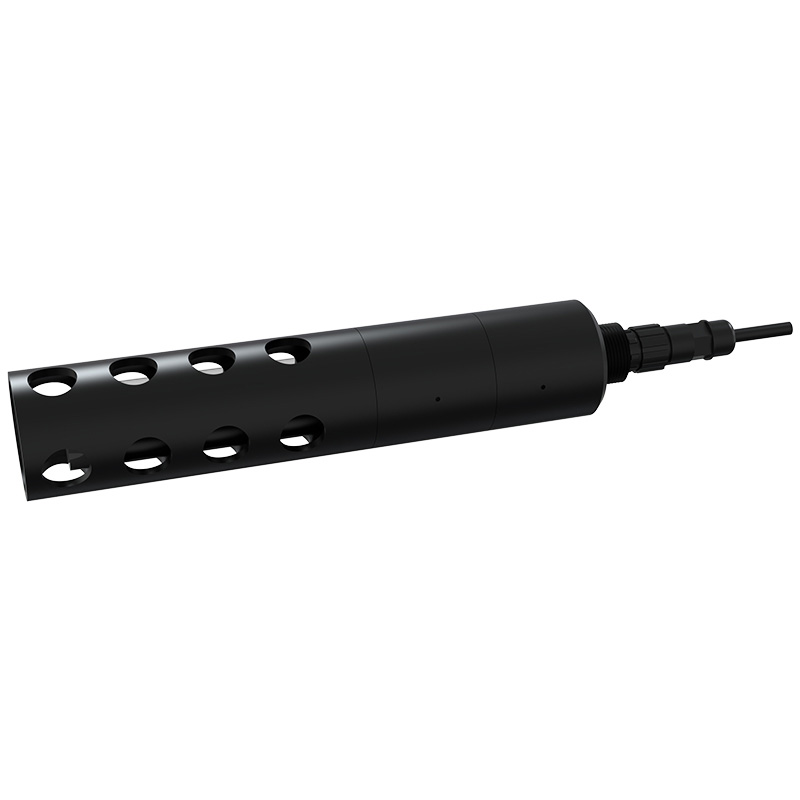Meteorological environment monitoring equipment supplier
Insist on doing high-precision customer favorite technology products

[ Function Overview of Water Quality Ammonia Nitrogen, PH, and Temperature Three-in-One Transmitter ]: This product is a device that measures the ammonia nitrogen concentration in water [combined nitrogen in the form of free ammonia (NH3) and ammonium ions (NH4+). It can automatically perform temperature and pH compensation for high-precision measurement in various environments. It can be directly put into installation. Compared with traditional ammonia nitrogen analyzers, it is more economical, environmentally friendly, convenient and fast.
[Ammonia Nitrogen Electrode Temperature Compensation]: With automatic temperature compensation function.
[Dimensions of ammonia nitrogen electrode]: length 303.5mm, outer diameter 50mm.
[Ammonia nitrogen electrode electrical interface]: The thread is 3/4 thread, which is convenient for installation.
[Ammonia nitrogen electrode protection level]: IP68;
[Ammonia nitrogen electrode life]: The electrode service life is about one year. After aging, new electrodes should be replaced in time.
[Ammonia Nitrogen Electrode Maintenance]: The equipment itself generally does not require routine maintenance.
[Precautions for using the ammonia nitrogen electrode of the three-in-one water quality ammonia nitrogen, pH, and temperature transmitter]:
①. Ammonia nitrogen transmitters that have not been used for a long time need to be soaked and activated before measurement.
②. Be sure to fully clean the sensor after activation and before testing. Immerse the front end of the sensor in deionized water for 5 minutes and stir the aqueous solution. For more complete cleaning, please replace the sensor with clean deionized water several times and clean it again to prevent measurement errors.
③. Ammonia nitrogen transmitters that have not been used for a short period of time need to be soaked in deionized water before measurement to prevent measurement errors.
④. After using the sensor, please rinse the sensor head with clean water and cover it with a protective cover.
⑤. Before using the equipment, check whether there are bubbles at the front of the ammonia nitrogen transmitter. If there are no bubbles, use it normally. If there are bubbles, swing the sensor downward to remove the bubbles.
⑥. Do not use the ammonia nitrogen transmitter in a highly corrosive liquid environment to avoid irreversible damage to the sensor.
⑦. In principle, the equipment should be calibrated before each use. It is recommended to calibrate it every 3 months for long-term use. The calibration frequency should be appropriately adjusted according to different application conditions (the degree of dirtiness of the application site, the deposition of chemical substances, etc.).
[Ammonia Nitrogen Electrode Calibration]: The modbus-rtu type supports register recalibration and calibration.
[Measurement range of ammonia nitrogen electrode]: 0-100mg/l; 0-10mg/l optional.
[Ammonia nitrogen electrode measurement error]: ±3%FS
[Ammonia nitrogen electrode measurement resolution]: 0.01mg/l.
[PH measurement range]: 0~14.00pH.
[PH measurement error]: ±0.15pH.
[PH measurement resolution]: 0.01pH.
[Temperature measurement range]: -20-80℃.
[Temperature measurement error]: ±0.3℃.
[Applicable temperature of ammonia nitrogen electrode]: 0~50℃.
[Ammonia nitrogen electrode voltage resistance]: 0.2MPA.
[Machine power supply range]: 10-30VDC.
[Electrode cable length of the whole machine]: Default is 5m (10m, 15m, 20m can be customized).
[Average power consumption of the whole machine]: 0.3W.
[Communication interface]: RS485.
[Common knowledge about ammonia nitrogen]: Ammonia nitrogen refers to nitrogen that exists in the form of free ammonia (NH3) and ammonium ions (NH4+) in water. There is a certain proportional relationship between free ammonia and ammonium ions in different pH environments, so the free ammonia concentration can be deduced from the pH.
[Measurement of ammonia nitrogen measurement by three-in-one water quality ammonia nitrogen, pH, and temperature transmitter]:
The ammonia nitrogen in the water can be converted into nitrite under certain conditions. If you drink it for a long time, the nitrite in the water will combine with protein to form nitrosamines, which is a strong carcinogen and is extremely harmful to human health.
The main harmful effect of ammonia nitrogen on aquatic organisms is free ammonia, which is dozens of times more toxic than ammonium salts and increases with the increase of alkalinity. The toxicity of ammonia nitrogen is closely related to the pH value and water temperature of the pool water. Generally speaking, the higher the pH value and water temperature, the stronger the toxicity, and the harm to fish is similar to that of nitrite.
The harm of ammonia nitrogen to aquatic life can be divided into acute and chronic. The harms of chronic ammonia nitrogen poisoning are: reduced food intake, slowed growth, tissue damage, and reduced oxygen transport between tissues. Fish are sensitive to ammonia nitrogen in the water. High levels of ammonia nitrogen will cause fish death. The dangers of acute ammonia nitrogen poisoning are: aquatic organisms become excited, lose balance in the water, convulse, and even death in severe cases.
The "Fishery Water Quality Standard" stipulates that the content of non-ionic ammonia nitrogen should not exceed 0.02 mg/L;
Normal water quality ammonia nitrogen should be <0.2mg/L, and the ammonia nitrogen wastewater discharge standard limit range is 0.02mg/L-150mg/L.